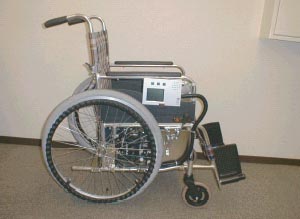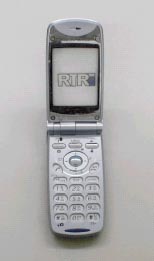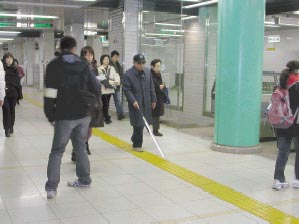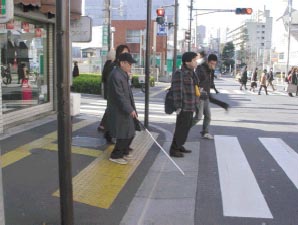NEWS
Information Provision System for the Transportation Disadvantaged and Common Information Infrastructure
Hiroshi MATSUBARA
Senior Researcher, Passenger Information Systems G.,
Transport Information Technology Div.
In order to realize user-friendly stations, not only the creation of a barrier-free physical environment, typified by the installation of escalators and elevators, but also the creation of a barrier-free environment in terms of information related to the use of stations, is important. Furthermore, the creation of a barrier-free environment should not be pursued solely from the viewpoint of persons with physical impairments, but it should also be meaningful for persons without physical impairment. Based on these considerations, research and development for an information provision system that is suited to the characteristics and situations of individual users has been conducted.
An information provision system for the visually impaired, who are the most disadvantaged with regard to information, has been developed for the station environment. This system consists in embedding wireless tags that contain location information in the Braille blocks used by the visually impaired, and in reading this location information via a wireless tag reader installed in the white cane of each visually impaired user to identify the current location of the user and provide guidance. From the viewpoint of the railway operators who build the infrastructure, however, the possibility of also using the same infrastructure as a guidance system for users other than the visually impaired is also desirable from the standpoint of efficient use of their information infrastructure. Similarly, it is also desirable for the data required for guidance to be sharable. Figure 1 shows the image of a common information infrastructure that aims for shared infrastructure and data use, and Figure 2 shows trial systems that use this shared information infrastructure.
Long-term verification testing of this information provision system for the visually impaired at subway stations and surrounding city areas has been performed since 2003. With the cooperation of Tokyo Prefecture, some 2000 IC tags have been placed in Wakamatsukawada Station on the Toei Oedo Subway Line and peripheral areas, allowing seamless guidance from the station to surrounding streets. Figure 3 provides an outline of the evaluation test. The persons (visually impaired) who participated in the experiment gave high praises, including <1> the fact they could learn their location when they wanted to, <2> the fact they received reliable guidance about the location of train doors, stairs, etc., even while on the train platform, and the fact that the system corrected their route if it was mistaken, <3> the fact that even though the station in question is large in scale and houses a large number of facilities, they were able to efficiently use each facility, and <4> the fact that using this system, they were able to acquire a mental map and use that as an aid for getting around.
Fig. 1 Image of common information infrastructure

(Cane for visually impaired user)
|

(System for wheelchair users) |

(Terminal for visually impaired and non-impaired users) |
| Fig. 2 Trial systems using common information infrastructure |

(At the station) | 
(In the street) |
| Fig. 3 Evaluation test at Wakamatsu-kawada |
















